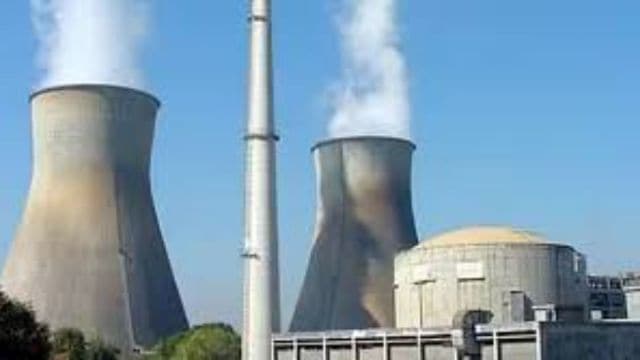The NDA government is readying multiple amendments to two overarching legislation governing the country’s atomic energy sector, with an internal deadline to wrap up political consultations in time for introducing these in the upcoming Winter Session.
While confirming that a winter session deadline is being targeted, a senior government official told The Indian Express that India’s move to look outwards for collaborations on nuclear is driven by two clear policy imperatives: the desperate need for base load alternatives to coal-fired capacity to tide over the limitations of renewables; and more importantly, the external outreach for nuclear collaborations is driven more by the need for capital than the need for technology.

This is despite the realisation that India’s existing nuclear technology — its mainstay Pressurised Heavy Water Reactor (PHWR) technology — has scalability issues. The official indicated that foreign funds, including sovereign funds from West Asia, have expressed early interest to put in capital to part-finance India’s stated objectives to scale up nuclear power, including getting into the manufacturing value chain of SMRs or small modular reactors. SMRs are increasingly being seen as important for nuclear energy to remain a commercially competitive option into the future.
The groundwork to build political consensus is currently underway, even as the government official expressed confidence that the amendments will be moved in the upcoming winter session after a monsoon session target was missed. The amendments aim to tweak and align the two domestic legislations with legal provisions globally, addressing festering investor concerns and setting the stage for an opening up of India’s civil nuclear sector.
Liability law and Atomic Energy Act
The first amendment entails an easing of the provisions in India’s nuclear liability law called the Civil Liability for Nuclear Damage Act, 2010 (CLNDA), which sought to create a mechanism for compensating victims from damages caused by a nuclear accident, and allocating liability and specifying procedures for compensation, but has subsequently been cited as an impediment by foreign equipment vendors such as US-based Westinghouse Electric and French nuclear company EDF. This is on the grounds that this legislation channellises operators’ liability to suppliers through a provision called the right of recourse of the operator — an operator of a nuclear plant would typically be a company such as the state-owned Nuclear Power Corp of India Ltd (NPCIL) while the suppliers could include foreign reactor manufacturers, but also domestic equipment suppliers such as L&T or Walchandnagar Industries. Foreign vendors, both involved in the nuclear island and the conventional parts of an atomic power project, have cited this specific provision of the operators’ ‘right of recourse’ as a reason for worries about investing in India’s nuclear sector due to fear of incurring future liability in the event of a nuclear accident. Workarounds, including capping liabilities above a certain limit and a state-backed fund pool as a backstop, are being considered.
The second major amendment in the works is aimed at tweaking the Atomic Energy Act, 1962 to enable private companies to enter nuclear power plant operations in India to potentially take a minority equity exposure of up to 49 per cent in upcoming nuclear power projects, while also setting the stage for foreign companies to infuse equity into these projects to scale up the execution pace. Hitherto, atomic energy has been one of India’s most closed sectors. The set of legal amendments are being seen as a reform push that could help leverage the commercial potential of the Indo-US civil nuclear deal, nearly two decades after it was inked. New Delhi is also keen to package this as part of a broader trade and investment outreach with Washington DC, which could eventually culminate with a trade pact that is currently under negotiation.
The SMR push
In the civil nuclear sector, New Delhi is now pushing SMRs — advanced nuclear reactors that have about a third of the generating capacity of most traditional nuclear power reactors but can produce a large amount of low-carbon electricity — as a technology of promise that can help in industrial decarbonisation, including a determined hard sell of the country’s ability to take something of a leadership role in the dissemination of this technology. These are important in offering base load power that could give grid operators some degree of flexibility, especially given the imperative of inducting renewables into the grid brings with it the challenge of inducting more base load generation to balance out the vagaries of renewable power output. While thermal generation is seen as important in this regard, nuclear energy offers a more carbon-neutral base load generation option.
Story continues below this ad
Though India’s civil nuclear programme has expertise in manufacturing smaller reactor types, it is almost entirely based on its mainstay PHWR technology — based on heavy water and natural uranium. But these are increasingly out of sync with the light water reactors or LWRs (also called pressurised water reactors or PWRs) that are now the most dominant reactor type across the world. The Americans, alongside the Russians and the French, are among the leaders in LWR technology — thermal-neutron reactor that utilise normal water, as opposed to heavy water, as both its coolant and neutron moderator.
This renewable surge of the last decade in India is coming at a cost, as grid managers are figuring out. India’s focus on rapid expansion of renewables in the absence of energy storage systems is now resulting in increasing instability in the country’s electricity grid due to the vagaries associated with green power — not generating power when the sun’s not shining or the wind is not blowing. The issue is compounded by the scaling down of thermal expansion, which provides critical baseload support to the grid during evenings in summer months, when solar generation dips and demand remains high. “That is leading to a tough situation for grid managers. We need baseload capacity to come up fast. And since coal is not really a palatable option, nuclear is key,” the government official quoted above said. Unlike renewables such as solar or wind, base load power sources including thermal or nuclear run nonstop to meet the bare minimum of power demand.
‘Bharat Small Modular Reactors’
As part of its domestic SMR push, the NPCIL announced a tender in March 2024 for a stepped-down version of indigenously-produced nuclear reactors. Reliance Industries Ltd, India’s largest private-sector corporation, Tata Power and Adani Power are among six private entities that are learnt to have formally expressed interest to set up small modular nuclear reactor-based projects. In response to requests for proposals floated by NPCIL to set up its proposed ‘Bharat Small Modular Reactors’ or BSMRs, Hindalco Industries, JSW Energy and Jindal Steel & Power too evinced interest.
Some 16 sites have been tentatively marked across six states — Gujarat, Madhya Pradesh, Odisha, Andhra Pradesh, Jharkhand and Chhattisgarh. The BSMRs are proposed to be constructed and operated under NPCIL’s supervision and the state-run company will retain operational control and asset ownership, while the successful bidders will hold beneficial rights over the net electricity generated for captive use. The fine print shows that the successful bidder must fund the entire project, including capital costs, and will be required to repay NPCIL for all costs incurred by the latter across the lifecycle of the project — from pre-project activities to final decommissioning. In return, these private players, which operate large industrial utilities ranging from petrochemical and edible oil refining units to cement and steel plants, will get access to long-term, assured electricity output from the project for their captive use.
Story continues below this ad
Some of the bidders are also learnt to have flagged multiple queries relating to ownership, charges and operations in this NPCIL proposal, which they feel could adversely impact the long-term viability of these projects.
India’s own range of at least three SMR prototypes that are being designed and developed by the Bhabha Atomic Research Centre, a constituent unit of the DAE, include broadly three reactor types. These reactors, apart from the Bharat Small Modular Reactor (BSMR – 200MWe), are the Bharat Small Reactor (220 MWe), and another smaller modular reactor (SMR-55 MWe). Of these, the BSR would be a PHWR-based prototype, while both the BSMR and the new 55MWe small reactor are both envisaged as light water reactors. The Russians are currently building light water reactor-based projects at Kudankulam, the early stages of which are producing electricity and supplying to the grid. A majority of the units that NPCIL currently operates are PHWR-based.
Conceptual and detailed designs for these SMR reactors are learnt to be at “an advanced stage” and, citing “the available in-house expertise and know-how of technologies being developed”, DAE officials said “no foreign collaboration” is being envisaged at this stage. It is planned to establish lead units of SMR-55 and BSMR 200 MWe at DAE sites for technology demonstration. These demonstration reactors are likely to be constructed in 60 to 72 months after being accorded project sanctions, officials said.


































